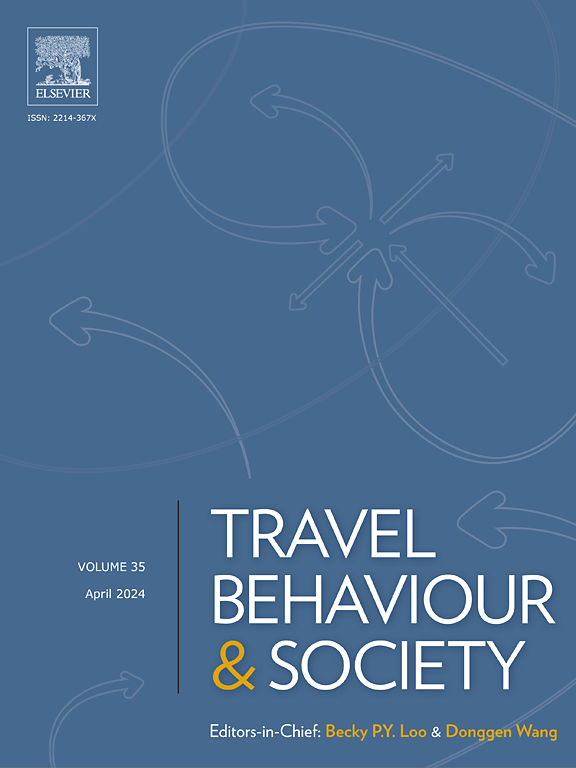超越时间和成本:探索出行方式选择因素的重要性
IF 5.7
2区 工程技术
Q1 TRANSPORTATION
引用次数: 0
摘要
本研究探讨了影响出行方式选择的因素以及这些因素的相对重要性。基于2019年在美国进行的两项全国性消费者调查,本研究的目的是衡量和解释在旅行模式选择决策中,时间、成本、便利性、安全、健康、情感、环境、社交等八种特定类型因素的自我报告重要性评级的异质性。为了帮助调查人们对这些因素的相对重要性,根据他们的情态风格(模式使用频率),使用分层聚类算法将受访者聚类成组。接下来,我们拟合两个看似不相关的回归(SUR)模型:每个调查数据集一个,八个重要因素作为因变量。自变量包括根据以前的研究精心挑选的受访者的人口统计学特征。结果揭示了两个数据集之间有趣的相似之处。例如,非白人受访者在选择模式时比白人受访者更重视安全因素。此外,高收入家庭的人在选择出行方式时更关心出行的便利性。受教育程度较高的人往往更关心他们的出行方式对环境的影响。几乎每天开车但很少乘坐公共交通的人对健康、情绪、环境和社会关系等因素的重视程度较低;对他们来说,便利、旅行时间和费用等其他因素更为重要。这些发现扩展了先前的文献,表明在模式选择分析中应该更多地关注测量和包括主观因素(除了工具考虑)。本文章由计算机程序翻译,如有差异,请以英文原文为准。
Beyond time and cost: exploring the importance of factors in travel mode choices
This study explores the factors affecting travel mode choices and the relative importance of those factors. Based on two nationwide consumer surveys in 2019 in the US, the objective of this study is to measure and explain heterogeneity in the self-reported importance ratings of eight specific types of factors—time, cost, convenience, safety, health, emotions, environment, social—in travel mode choice decisions. To help investigate the relative importance people attributed to the factors, respondents were clustered into groups using a hierarchical clustering algorithm based on their modality styles (mode use frequencies). Next, we fit two seemingly unrelated regression (SUR) models: one for each survey dataset, with the eight importance factors as the dependent variables. The independent variables consisted of respondents’ demographic characteristics carefully selected based on previous research. The results reveal interesting similarities between the two datasets. For instance, non-white respondents assigned greater importance to safety considerations in their mode choice than did white respondents. Also, people from higher-income households cared more about the convenience of their trip when selecting a mode. More educated people tended to care more about the environmental effects of their travel mode. Individuals who drive almost every day but rarely use public transit placed lower importance on factors related to health, emotions, the environment, and social relationships; other factors like convenience, travel time, and cost were more important to them. These findings extend prior literature by suggesting that greater attention ought to be paid to measuring and including subjective factors (in addition to instrumental considerations) in mode choice analyses.
求助全文
通过发布文献求助,成功后即可免费获取论文全文。
去求助
来源期刊

Travel Behaviour and Society
TRANSPORTATION-
CiteScore
9.80
自引率
7.70%
发文量
109
期刊介绍:
Travel Behaviour and Society is an interdisciplinary journal publishing high-quality original papers which report leading edge research in theories, methodologies and applications concerning transportation issues and challenges which involve the social and spatial dimensions. In particular, it provides a discussion forum for major research in travel behaviour, transportation infrastructure, transportation and environmental issues, mobility and social sustainability, transportation geographic information systems (TGIS), transportation and quality of life, transportation data collection and analysis, etc.
 求助内容:
求助内容: 应助结果提醒方式:
应助结果提醒方式:


